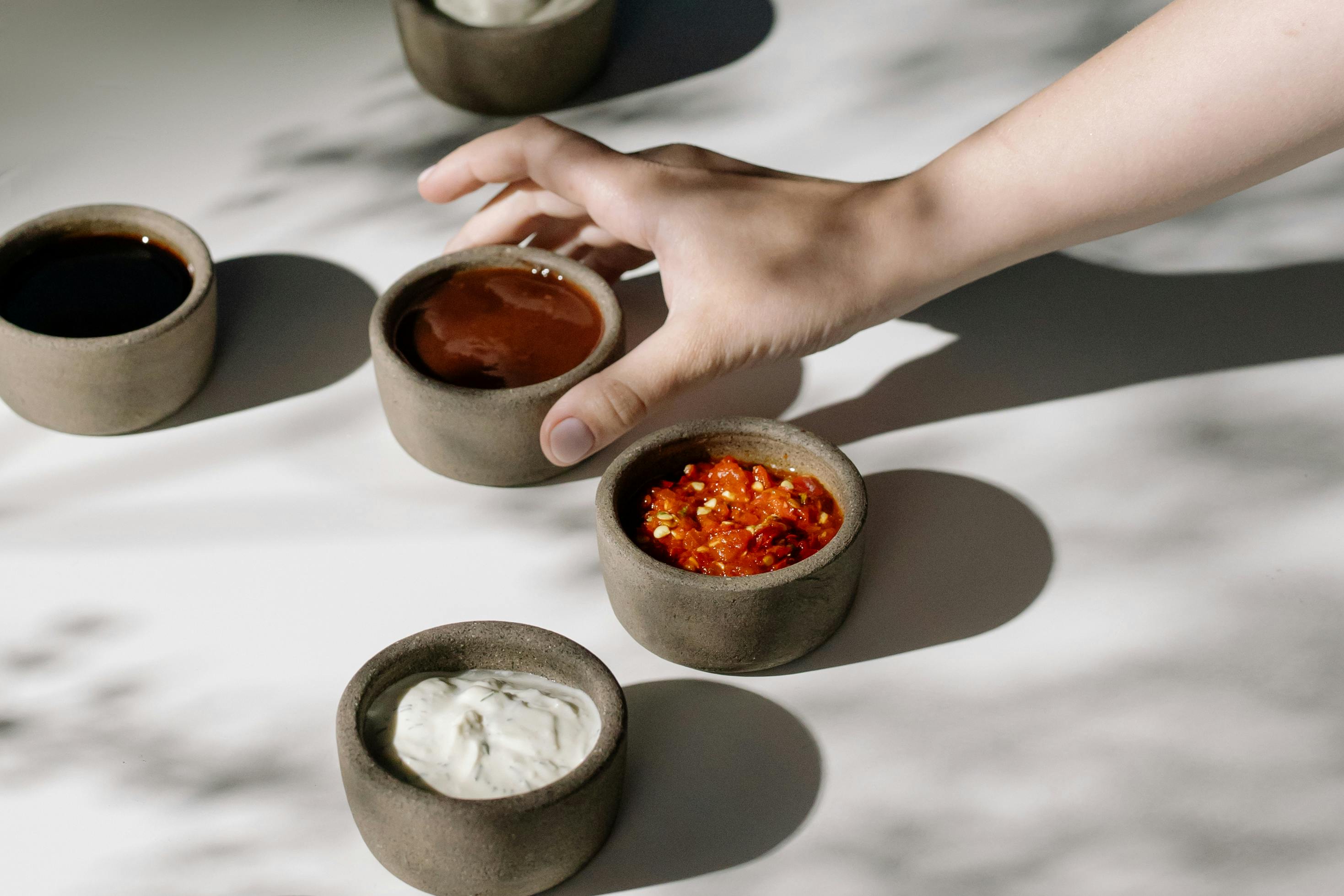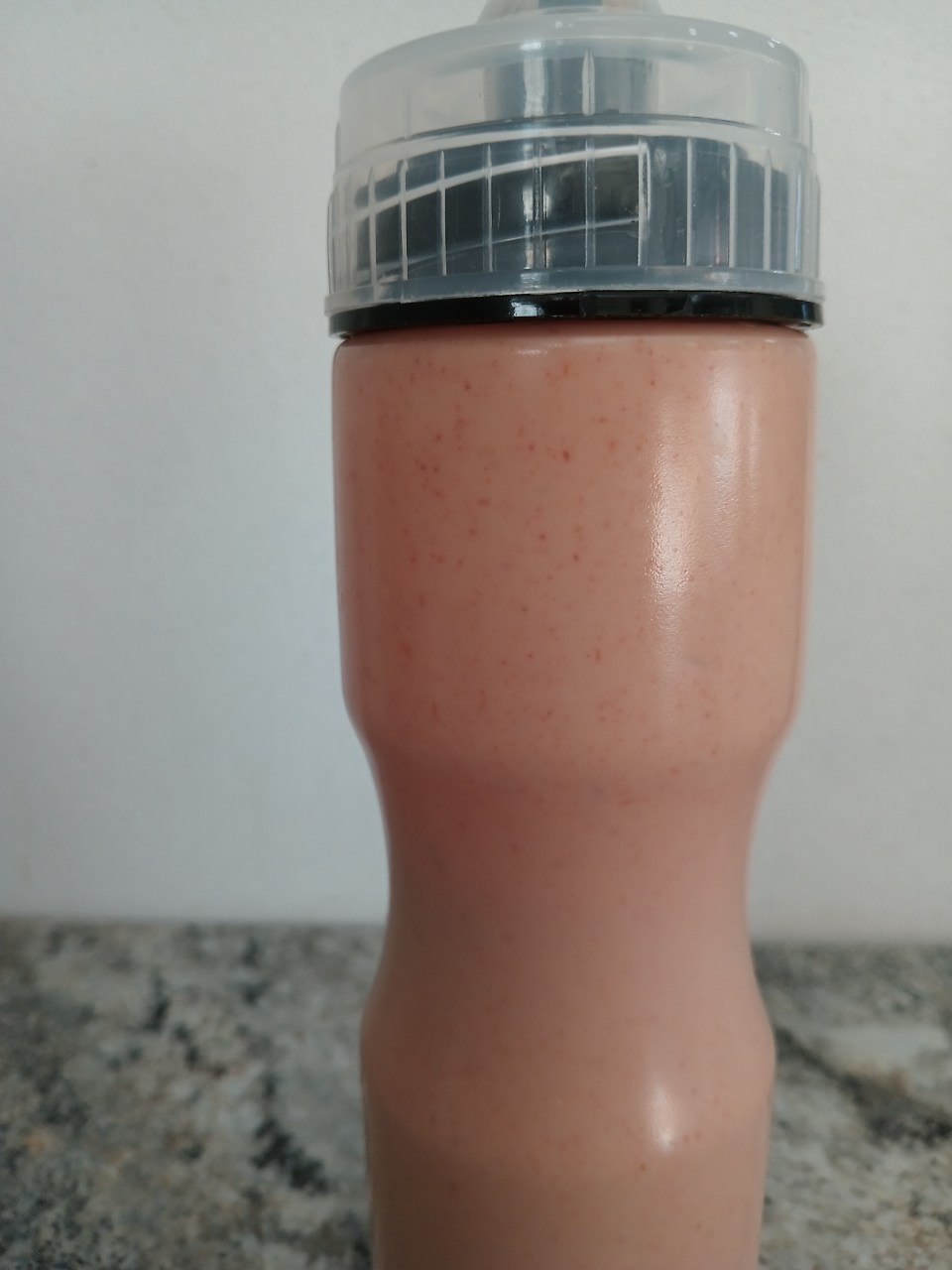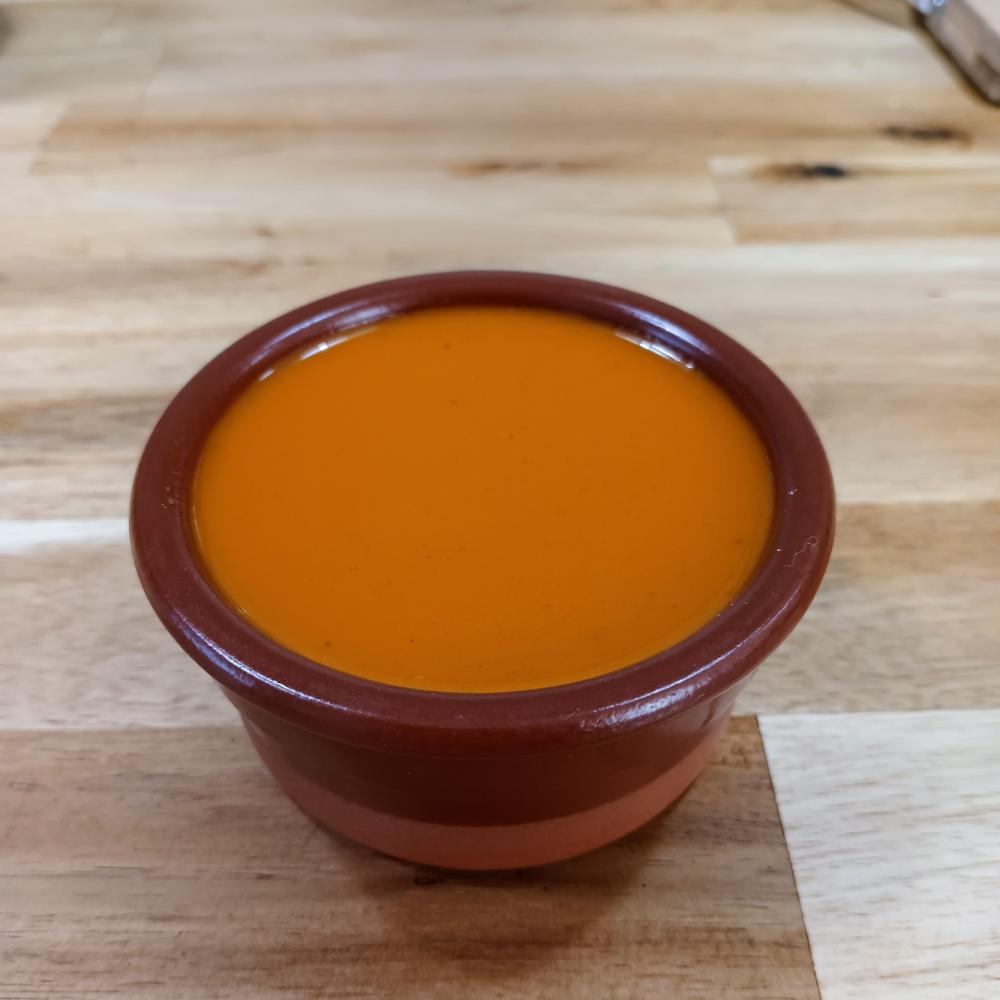My Essential Sauces for the End of Sauce Month

I didn’t know until recently that March is considered “sauce month” in the United States. I have a love-hate relationship with sauces. Love because a good sauce gets my toes curling, makes my mouth instantly water, and will endlessly enhance your meal if applied the right way. Another reason I love sauce is because it lets you focus on the bare basics in other parts of your meal and still spruce it up an impressive amount.
The thing is, I have a hate problem with sauce because more often than not, sauces aren’t that great. A bad sauce is overpowering, distracting, and unhealthy—I mean sure, I like ketchup as much as the next guy, but not at the expense of ruining the rest of a dish.
If you want an awesome sauce, you generally have to pay for it. My favorite store-bought sauces tend to be pretty pricey, whereas the sauces I complained about are loaded with cheap vinegars and high-fructose corn syrup.
Here’s a totally obvious solution: make your own sauces. You want something amazing? It’s shockingly easy to make. I’ll probably always buy ketchup and mustard from the store, but (almost) everything else I make myself. I’ve worked very hard on some signature sauces that I regularly make and store to throw on top of whatever meal I want to make amazing. After tons of work and tasting dozens of different sauces over the years, here is a list of my favorite sauces.
If I’d had the hours of time to put into it, this would have been an insanely long article about all the different kinds of sauces I love to make. As it is, time is limited, so this article is shortened to the absolute essentials: here are my two sauce must-haves in my kitchen:
Matthew's Everything Sauce

The singing star of this recipe is the lavender, which adds floral notes that pair extremely well with red wine vinegar. This is a unique accent that sets the fry sauce apart and has won me a competition or two. The addition of paprika and cayenne pepper add some pop and zing, and they also add some gorgeous coloring to the sauce, giving it a wonderful visual element. I have yet to add this sauce to something without loving the result. Thus, this is no mere fry sauce. It's everything sauce.
Ingredients:1 cup mayonnaise
1/3 cup ketchup
2 teaspoons red wine vinegar
1/2 granulated garlic or garlic powder
1 tablespoon paprika
1/2 teaspoon cayenne pepper
1/2 teaspoon , powdered lavender
1 teaspoon honey
Directions:
Recipe formatted with the Cook'n Recipe Software from DVO Enterprises.
Matthew's Fermented Hot Sauce

The fermenting process is a good way to preserve vegetables. It promotes the growth of healthy probiotics and prebiotics, which is great for your health. It also breaks down certain enzymes, making the food's nutrients easier for our bodies to digest and use (this is called bioavailability). I prep this hot sauce several times a year. Fall harvest often yields more spicy peppers than I can eat, so this is a great sauce to make to prevent my peppers from going bad and to get all the incredible health and culinary benefits of fermented foods. On top of that, fermented foods are just plain delicious. This sauce has plenty of vinegar, garlic, and heat to add some awesome, funky zing to your meal. Use it as an ingredient in soups and stews, or drizzle it over your grilled potatoes, pulled pork, or ground beef as an awesome sauce. Just like cooking, storing in a fridge, or canning, fermenting foods comes with risks. If done improperly, such as not fully submerging your food in the brining liquid, or not having enough salt in the brine, it can cause BAD bacteria to grow, which will ruin the food and could make you sick. Follow the directions in this recipe carefully, but add more salt to the brine as needed. It is best practice to use a kitchen scale so you can calculate exactly 2-3% the weight of your peppers in salt, which is the ideal ratio for a brining solution.
Cook time:
For the Fermented Peppers
8 medium jalapeño peppers *
6 grams salt
2 cups water, preferably filtered
For the Sauce **
1 jar fermented jalapeño peppers
1/2 cup white wine vinegar
1 tablespoon brine
2 tablespoons fresh cracked black pepper
1 tablespoon honey
3 cloves garlic ***
1 tablespoon canola oil
Directions:
Wash your jalapeno peppers.
Chop the stem off each jalapeno pepper, then cut each in half lengthwise.
Place the peppers in a glass jar. Plastic is acceptable if you don't have glass, but do not store the jalapenos in a metal container, which will impart a metallic taste to them after the fermenting process.
Dissolve the salt in the water, then pour the solution over the jalapeno peppers in the jar.
It is very important that the peppers are entirely submerged in water. If there isn't enough water to cover all of them, add more water.
Cover the peppers in a pickling weight to keep them submerged in the brine. if you have no pickling weights, take a sheet of paper towels and fold it in half twice. Press the paper towel into the brine with the peppers to hold them down in the water.****
Wait for five to fourteen days for your peppers to ferment. The amount of time depends on how funky / fermented you want your peppers to be. During this period, it is normal for the brine to become cloudy / white. It is also normal for the top of the liquid to gain a film of sorts, which is merely the accumulation of beneficial bacteria that create probiotics for your body. However, it is NOT normal for fuzzy mold to appear. The cause of this is likely that your peppers were not fully submerged in the brine. If it occurs, discard the jalapeno peppers.
Making your hot sauce:
Remove your newly fermented peppers from the brine. Set the brine to the side (DO NOT throw it away).
Combine all of your ingredients in a blender.
Run the blender on high until your ingredients are all pulverized and blended. Because you added oil to this recipe, the resulting liquid should look somewhat creamy and gradually lighten in color. When I use any sort of red pepper (like red jalapenos), the sauce usually turns orange.
You could consider the sauce finished by now. However, it will have pulp in it from all of your peppers.
To render a smooth sauce, place a fine mesh strainer (mesh is preferred to wire) over a bowl and pour your sauce into it.
The resulting liquid is your finished hot sauce. Pour it into a squeeze bottle or jar and let it sit for at least three hours (preferably overnight) to give the elements time to meld.
You may discard the leftover pulp, but I personally enjoy stirring it into melted butter and using it on garlic bread or fried potatoes.
You can likewise discard the leftover brine, but I prefer keeping it for salad dressings and as a mix-in to funky drinks.
Notes:
*You can use any pepper you want. I tend to use jalapeno peppers because they're more common, but I adore this sauce with habaneros or scotch bonnets.
**Honestly, you should add anything you want to this recipe. Try rice vinegar instead of white wine vinegar, and sesame oil instead of canola oil for an Eastern twist. Try brown sugar instead of honey. The world is your oyster, and this will soon become YOUR incredible hot sauce.
***I actually use my recipe for fermented honey and garlic in this sauce. However, if you haven't made that, fresh honey and garlic will do.
****The main thing to remember during the fermenting process is to have your peppers completely submerged in the brining liquid where probiotics can grow. Oxygen is an environment for harmful bacteria, which can ultimately ruin the fermentation process and result in a wasted batch of peppers.
Recipe formatted with the Cook'n Recipe Software from DVO Enterprises.
 Matthew Christensen
Matthew Christensen
Weekly Newsletter Contributor since 2023
Email the author! matthew@dvo.com
